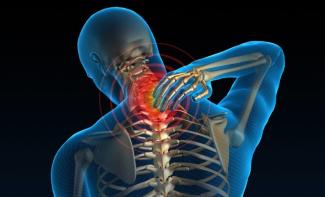
Fixing Your Neck Pain with Physical Therapy
Neck pain is a common complaint treated by outpatient orthopedic physical therapists. Many adults will experience pain in their neck at some point in their lives. It can usually be attributed to trauma (car accident, sports injury), poor posture over many years, or chronic symptoms due to arthritis. Neck pain is most common in adults aged 30-50 years old. Research indicates that neck pain I smore common in women. Research has shown risk factors for neck pain include obesity, prolonged computer use, participation in athletic events (particularly contact sports), smoking, and poor posture.
Neck pain can manifest in many ways. While pain can be felt in the neck itself, sometimes pain can refer down along the shoulder or arm and can reach the hand. Symptoms of neck pain can vary and can include the following.
- Pain in the neck, upper back, shoulders, arms or hands
- Numbness/tingling/shooting pain in the neck, upper back, shoulders, arms or hands
- Weakness in the arms or hands
- Difficulty turning head (especially noticed while driving)
- Difficulty looking up
- Headaches
While symptoms can vary, your physical therapist can determine the cause of your symptoms by performing a full orthopedic assessment. Location of symptoms and assessing strength/reflexes of each side of the body can lead your PT to the root cause of your symptoms. There are many potential causes of neck pain that can include osteoarthritis (wear and tear over time), disc degeneration, spinal stenosis (central: narrowing of spinal canal, lateral: narrowing of area of vertebrae where nerve roots exit), nerve root impingement, muscle strain, or trauma (whiplash due to car accident, contact sports, or a fall).
A typical physical therapy assessment of the neck will include many tests and measures. Your Pt will assess not only your neck but other areas of the body that can have an effect on the neck and how it functions. Your examination will assess:
- Posture
- Neck, shoulder and upper back range of motion/mobility
- Strength of neck muscles scapular (postural) muscles
- Upper body reflexes and specific strength testing to ensure there is no irritation or compromise of the neurovascular system
- Segmental motion testing to ensure that each segment of the neck is moving appropriately
- Assessment of breathing mechanics
Once completed, the physical examination findings will direct your physical therapist to causes of your pain and will prescribe and implement a personalized treatment plan based on objective findings during the examination. Treatment should be multifaceted and will include manual therapy, postural mobility and strengthening exercises (usually directed at the mid and upper back to address any postural abnormalities), stretching, and a home exercise program to supplement work done in the clinic.
Physical therapy can help decrease and, in most cases, eliminate neck pain without the need for surgery or addictive opioids. If you or a loved one are experiencing neck pain, please reach out to your local Doctor of Physical Therapy and get the help you need to begin living your best pain-free life. Physical Therapists improve the way you move!

